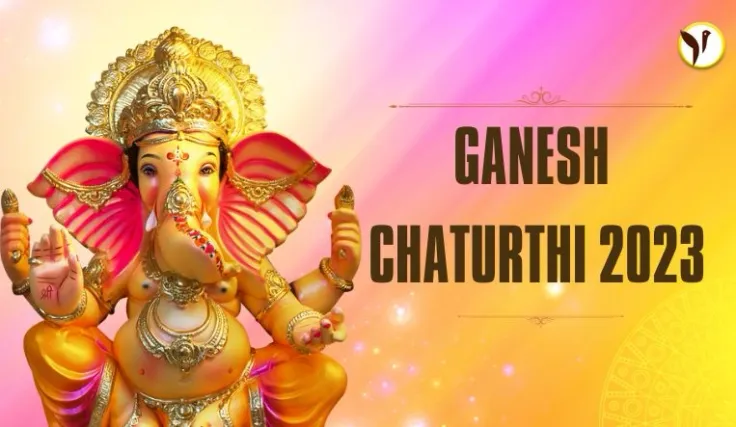A feeling of devotion is already at its peak in our hearts making our souls dance as Ganpati Bappa is just about to arrive tomorrow in our house. Ganpati Bappa is usually known for his cosmic powers, knowledge and much more will bring prosperity and tons of abundance to our houses. But before that let’s discuss a few unknown tales about him.
Lord Ganesha’s unique bride
Ganesh Chaturthi, an 11-day Hindu festival honoring Lord Ganesha, the revered deity known as the 'Vighnaharta' or 'Obstacle Remover,' is quickly approaching. Sweet shops brim with festive treats, artisans finish Ganesha idols, and ornate pandals spring up for eager devotees looking forward to 19 September. Lord Ganesha, the beloved son of Lord Shiva and Parvati, once astounded his worried mother by symbolically marrying a banana tree branch to ensure her plentiful food. This act symbolizes Ganesha's long-standing relationship with banana trees, which have long been a part of Indian culture and cuisine, providing a variety of sweet and savory culinary options.
Kangiten: The Japanese form of Lord Ganesha
Matsuchiyama Shoden, also known as the Honryin Temple, is located in the heart of Tokyo's historic Asakusa district. This ancient temple, which was most likely founded in 601 AD, predates even the famous Sens-ji temple in Asakusa. The devotion to Kangiten, a Japanese deity with striking similarities to the Hindu god Ganesha, distinguishes Matsuchiyama Shoden.
Kangiten, also known as Binyaka-ten, shares not only a name with Ganesha but also characteristics such as being the remover of obstacles and bestowing good fortune and prosperity on devotees. This deity is also linked to morality and the destruction of evil, reflecting Ganesha's multifaceted role. Because of the historical intertwining of Buddhism and Hinduism in Japan, Hindu deities have been incorporated into Japanese worship, blurring the lines between the two traditions over the centuries.
Ganesha's Marital Status: Varied Traditions and Regional Influences
The marital status of Lord Ganesha varies across different traditions and regions of India. In a non-mainstream tradition, particularly prevalent in southern India, Ganesha is regarded as a lifelong bachelor, known as a brahmacārin, reflecting the connection between celibacy and spiritual growth. This viewpoint contradicts the more widely held belief that Ganesha's consorts, such as Buddhi, Siddhi, and Riddhi, are personified as goddesses representing his creative energy.
These differences are influenced by regional differences as well as historical context. Devotees can pray to Ganesha in various forms, ranging from a young boy (blagapati) to a Tantric deity. According to the Ganesha Purana and Mudgala Purana, Ganesha is flanked by Siddhi and Buddhi, who are integral to his identity and do not require separate Shakti worship rituals.
The Ganesha Temple at Morgaon, a key site in the Aavinyaka complex, has Siddhi and Buddhi on either side of Ganesha's image, whereas they are known as Siddhi and Riddhi in northern India. Although there is no Puranic evidence for this pairing, it is consistent with other Hindu scriptures.
Ganesha’s Collaboration in Writing the Mahabharata
Due to his intimate knowledge of the characters and events, sage Ved Vyasa received a divine directive from Lord Brahma to pen the epic of the Mahabharata in the tranquil Himalayan surroundings. Recognizing the magnitude of the task, Vyasa sought the assistance of a competent scribe, eventually turning to Lord Ganesha. Ganesha agreed, however, on the condition that Vyasa narrate the entire epic without pause, whereas Vyasa insisted on Ganesha comprehending each sentence before writing. Thus began the legendary collaboration.
Vyasa's strategic insertion of complex sentences matched Lord Ganesha's rapid writing pace, compelling Ganesha to pause for comprehension. Vyasa was able to craft the next sentence while Ganesha grasped the current one thanks to this clever strategy. The epic took three years to write, during which Ganesha's stylus broke.
Not only this but there are still many tales of Lord Ganesh which illustrate his supremacy and divinity but I think these are enough for now. As we read about his unusual banana tree bride to his connections in Japan as Kangiten, Ganesha's influence transcends borders and cultures. Moreover, his role as the scribe for the epic Mahabharata highlights his intellectual prowess and divine collaboration with sage Ved Vyasa. These narratives not only deepen our understanding of Ganesha but also showcase the enduring relevance and appeal of his timeless stories in the tapestry of Hindu mythology and global spirituality.
Ganpati Bappa Morya!!
Also read, India to become a leader in Sustainable technology: Honeywell Chief Scientist







